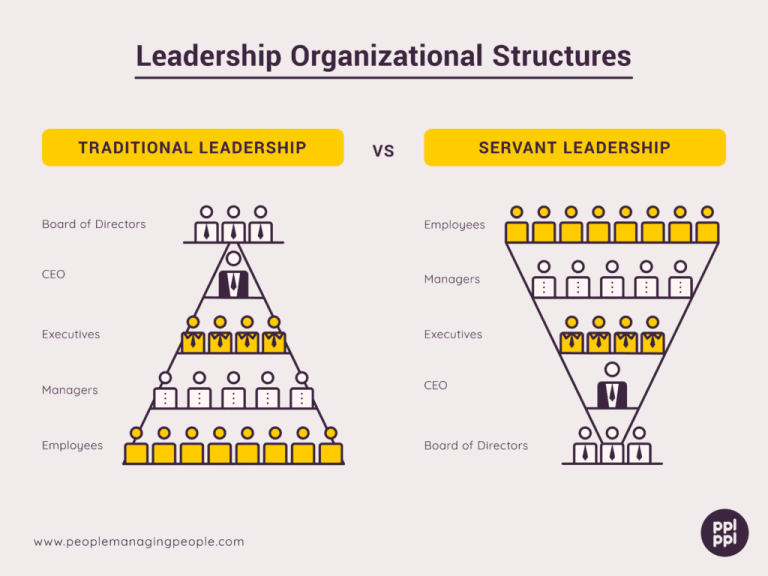Trust is something we all want. We want to be trusted by our peers, our family and friends, and even our pets (well, some people do). But how can you build trust in the workplace?
The good news is that it doesn’t take much. It just takes a strategic plan for your actions and words to build trust at work.
Employee trust is one of the most elusive yet important commodities for an organization to flourish. Employees without trust in their leaders typically do not work with full confidence and don’t put in their best work. This results in productivity in the slow lane or even a halt. In this article, you will discover 12 tips on how to build trust in the workplace.

Jump To Section
Why Is Trust So Important In the Workplace?
According to an article from hbr.org “Compared with people at low-trust companies, people at high-trust companies report 74% less stress, 106% more energy at work, 50% higher productivity, 13% fewer sick days, 76% more engagement, 29% more satisfaction with their lives, 40% less burnout.”
Trust is important in all relationships, whether it be personal or professional. When you trust someone, you can feel safe and secure with them and allow them to do their job. When your colleagues trust you, they are more likely to want to collaborate with you on new projects and initiatives.
Trust is a two-way street; while you must trust your colleagues, it’s imperative that they also trust you. Fostering a culture of trust can help build your team and create a positive work environment for everyone.
It could be said that trust isn’t just about knowing what someone will do; it’s also about knowing why they do it.
See Related: How to Build Strong Work Relationships! 10 Essential Tips
Building Trust In The Workplace
Now let’s get into the tips on how you can build trust in the workplace as a leader or even just a regular employee.
Practice What You Preach
As a leader, you have to practice what you preach. Your employees aren’t going to trust you if they see you being lazy or late all the time. They need to see that you put in the hard work and make an effort.
It might seem like nothing more than common sense, but tons of leaders out there don’t realize how important it is to set a good example for their teams. They think that if they micromanage enough and tell their team exactly what to do, then they won’t have a problem. But that isn’t true; it just leads to them becoming more stressed out and annoyed with their employees who don’t follow directions.
It all comes down to the fact that people are always watching you. As the leader, everything you do reflects on your team.
See Related: 12 Top Leadership Qualities for Great Leaders

Utilize Your Listening Skills
Today, more than ever, it seems that we’re in a world of people talking at each other. From social media to the news, from casual conversations to our deepest, most important relationships: it feels like there are so many voices and not enough ears. Sometimes it can be hard to break through the noise and have a voice that matters.
But there is a way to stand out with our voices. And it’s not by talking over the others. It’s by listening.
I’ve found that nothing is more powerful than truly hearing someone else out and letting them know that you’ve heard them and that you care about what they have to say. When you do, when you take the time to listen, you’ll find that something magical happens! People listen back. They hear your thoughts, they consider your ideas, and they follow your guidance.

Empower Members of Your Team
As a manager, you should want to empower your team members. But what does that mean, exactly? And how do you go about doing so?
The first part is easy: empowerment means giving your team members the authority, information, knowledge, and support they need to be successful in their roles. It’s also important to respect each person’s unique experience and expertise.
But what about the second part? How can you put this idea into action? Here are a few tips:
Know the strengths of each of your team members. This will allow you to delegate tasks based on their abilities and interests. For example, if you have one extremely detail-oriented employee and another who is great at seeing the big picture, you can assign them different parts of a project that play to those strengths.
Provide tools for success. Give your employees all of the tools (software, training, etc.) they need to excel in their roles. This could include giving them access to additional training courses or providing them with laptops and software licenses necessary for completing projects effectively.
Trust your team members to get things done. Let them do their jobs without hovering over their shoulders or micromanaging them. Provide guidance when needed but allow them to manage their tasks as much as possible.
See Related: How to Delegate Effectively Using The 5 Rights Of Delegation

Work On Employee Growth
Every manager wants to find and retain the best talent. The best way to do that is to show employees that you care about their professional development, not just their job performance. By investing in employees’ personal and professional growth opportunities, you can help them to form a deeper connection with the company and its mission.
Here are a couple of ways to help your employees find personal and professional development.
1. Show them where they can go.
Your employees probably have a good idea of what they’d like to achieve but they may not know how to get there. Help them by showing them how they can get from where they are now to where they want to be. You can connect them with mentors within the company, or you can offer outside conferences or training opportunities that will help them learn new skills.
2. Let them try something new.
Employees don’t need to remain stuck in the same role forever. Chances are, it’s not good for the health of your company if they do! Encourage employees to try out different positions within the company to discover more about their strengths and interests. If you think it would benefit their overall career trajectory, offer “tryouts” for different roles throughout the team or company.
See Related: How to Have More Self-Respect: 10 Life-Changing Tips

Understand the Concepts of Servant Leadership
Most people think of leadership as being about the leader. It’s about having all the answers, being revered and respected, and being powerful. However, servant leadership is a different kind of leadership.
It’s not about power, it’s about service. It’s a philosophy focused on serving others. Prioritizing their needs before your own and acting to empower them. This is often the best way to achieve your goals as a leader.
So how does servant leadership work? First, you have to have some idea of what success looks like for you and your team. Then you need to figure out what you need from others to succeed, and what they need from you.
You need to ask yourself questions like: “What do I want them to know/believe/do?” and “How can I help them get there?” From there you can start making decisions that will empower them and enable them to reach their fullest potential, ultimately making both of you more successful.
Servant leadership builds trust in three main ways: 1) by focusing on helping others reach their goals, 2) by inspiring others with your actions, and 3) by empowering others through listening, empowering, and empathizing with them.
See Related: 10 Proven Servant Leadership Characteristics You Can Build
Create a Culture of Honesty
Honesty is vital in building trust in the workplace. If you haven’t been honest with your employees, you can be sure they will find out. And when they do, trust will be the last thing on their minds.
That doesn’t mean you have to tell your employees everything that’s going on in your business, but it does mean that if something is happening in the office or if there is a change coming up, you need to tell them about it before it becomes public knowledge. Even if the news might not be great for them.
When you are open and honest with your employees, you are building trust. They will feel like they can come to you with questions or concerns without being afraid of being reprimanded or fired. This makes it easier to keep your ear to the ground and find out what is going on in your company.
When an employee comes to you with an issue they feel needs addressed, don’t ignore them. Listen to them and take the time to address their concerns. When this happens, they will see that you value their opinions and care about their well-being.
Embrace Diversity and Differences
Diversity in the workplace is more than just a feel-good talking point. It’s a key to building trust within your team, and it’s one of the main ways you can keep people focused and passionate about their jobs.
If you look at the research on diversity in the workplace, it’s clear that diversity is closely correlated with higher performance. But why?
A lot of it has to do with creativity. Multiple perspectives and varied backgrounds help teams see problems from different angles and generate more ideas for how to solve them. And that kind of creativity is what helps teams thrive in fast-paced, constantly changing environments.
See Related: Why is Diversity in the Workplace Important? 8 Advantages

Admit When You’re Wrong
You’re going to be wrong sometimes. You’re human, and humans are far from perfect.
In fact, it’s in being imperfect that we learn the most valuable lessons about ourselves and our world. And as a leader, there’s no way around it, you’re going to be wrong sometimes. It’s inevitable, and it will happen.
But when you’re wrong, how do you handle it?
As a leader, one of the best ways of building trust in the workplace is by admitting when you’re wrong. In fact, if you don’t admit when you’re wrong, your team will notice and it will break whatever trust they have in you.
Think about it. If your boss says something hurtful or offensive but refuses to admit they made a mistake and apologize for what they said, how would that make you feel? Most likely, you’d feel betrayed by their actions. They know they were wrong but refuse to acknowledge it or take responsibility for their words.
That kind of behavior breaks down trust even faster than being wrong in the first place! But if your boss makes a mistake and admits it and even apologizes for their behavior, it shows humility on their part as well as an understanding that they are human.
Be Vulnerable When It’s Appropriate
Being vulnerable can build trust between you and your employees, allowing you to share your hopes and fears with them. When we’re vulnerable, we send the message that we’re not perfect and that it’s okay for others not to be either. It shows that we don’t have all the answers and that it’s okay for them not to either.
Being vulnerable isn’t just about sharing failures or weaknesses with others. It could also include sharing your dreams and aspirations for your company. Trust takes time.
Sometimes it makes sense to wait a while before sharing some of your deepest vulnerabilities with employees, especially if they feel like they could impact how people view you as a leader. But when you do share something personal and honest, it can create a deeper bond and a stronger culture of trust within your team.

Build Connections With Your Team
A strong team is built on strong relationships. A good leader can build trust within a team, and that trust comes from connecting with the individuals on your team.
There are many ways to build trust within a team, but here are some of my favorites:
1. Introduce your team to each other during meetings.
First impressions are important, and so is the atmosphere of a meeting. This is especially true when it comes to new hires joining a company or during the first meeting between team members.
2. Get to know your team’s interests outside of work.
To make personal connections with your employees, you need to get to know them outside of the office setting. It’s not only about what they do at work but also about their lives outside of work.
3. Show interest in your employees’ careers.
Take time out of your day to talk with an employee about their career goals and how they would like to grow within the organization. This will help you build a relationship with them and show that you care about their future success.
Recognize the Effort and Achievements of Your Team
Want to know the secret to motivating your team? For a lot of people, it’s not money. It’s recognition!
That’s right: feeling like you’re being heard, seen, and valued is worth way more to most than a raise or a bonus.
So how do you go about recognizing your team? Here are some tips:
Recognize in public, praise in private. It may feel uncomfortable to make someone feel like they’re being put on the spot, but it’s important to publicly acknowledge your team members’ achievements. Praise them for their great work at team meetings so that everyone knows what they did and why it was great.
However, when giving constructive feedback (which is also an important part of recognition), do it in private so that no one feels embarrassed or singled out in front of the group.
Be specific with your praise. Don’t just tell someone “Good work!” Say what exactly they did well and why it was good work (and describe how it helped the company). This type of feedback helps people understand what they’re doing right.
See Related: 21 Employee Recognition Ideas To Show Your Employees You Care
The long-term benefits of a trusting workplace
Trust is a vital component of any successful workplace, and fostering a culture of trust can have significant long-term benefits for both the organization and its employees. In this section, we’ll explore the various advantages of cultivating a trusting work environment and how it positively impacts overall performance, employee satisfaction, and business growth.
Improved Collaboration and Teamwork
A trusting workplace promotes open communication, collaboration, and teamwork among employees. When trust is established, team members feel more comfortable sharing their ideas and opinions, leading to better decision-making, increased innovation, and a stronger sense of collective ownership in the company’s success.

Higher Employee Engagement
Employees who feel trusted and valued are more likely to be engaged in their work. They tend to take more initiative, contribute creative ideas, and be more committed to their roles. A trusting work environment fosters a sense of belonging and loyalty, which ultimately reduces employee turnover and improves overall job satisfaction.
Increased Productivity
When trust is present in the workplace, employees can focus on their tasks without constant supervision, leading to increased efficiency and productivity. Trust enables employees to work independently and make decisions without constant second-guessing or fear of retribution. This empowers them to be more proactive, resourceful, and accountable for their work.
Enhanced Innovation and Risk-taking
A trusting workplace encourages employees to take calculated risks and think outside the box. When employees feel secure in their positions and know that their ideas are valued, they are more likely to propose new solutions and contribute to an organization’s growth and innovation.
Reduced Stress and Improved Mental Health
Trust in the workplace helps to create a supportive and positive environment for employees. This reduces stress levels and contributes to improved mental health, which in turn can lead to reduced absenteeism and increased employee satisfaction and retention.
Stronger Company Reputation
A company with a trusting workplace culture is more likely to attract top talent and maintain a positive reputation among both employees and customers. Companies with strong trust levels are often perceived as industry leaders and enjoy a competitive advantage in the marketplace.
Final Thoughts
Now that you know how to build trust in your team, it’s time to put your knowledge into practice and start building trust. The first step is to recognize that everyone makes mistakes. If your team trusts in themselves, they will likely also trust you. From there, the key is to be consistent with your actions, treat everyone in a fair manner, and if you do something wrong, admit to it instead of brushing it under the rug.
Is it that easy? Can trust be built so quickly? Yes, with enough application and consistency, building trust among your staff is possible!
Did you find this article on building trust at work useful? Don’t forget to share and subscribe below.


